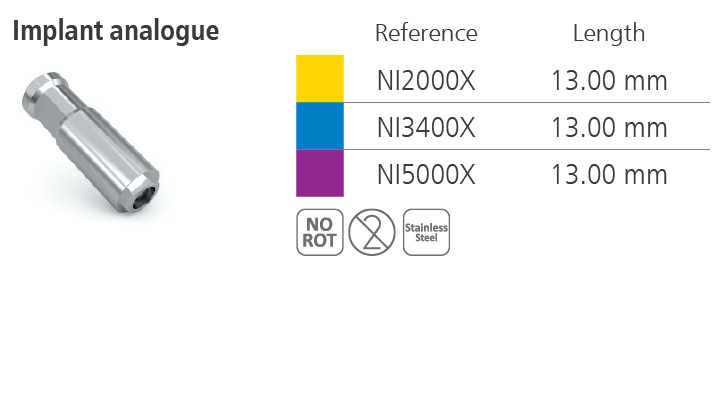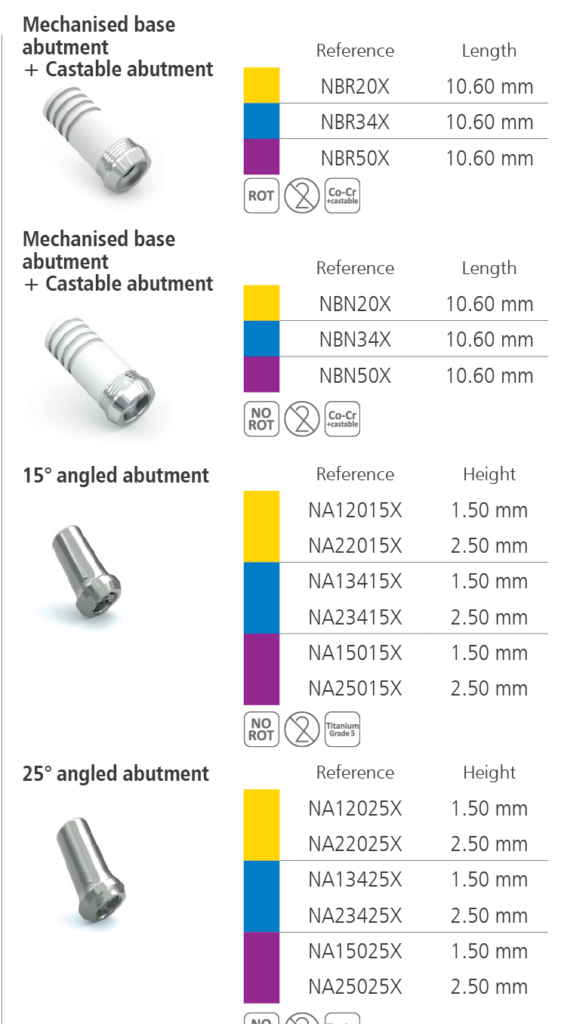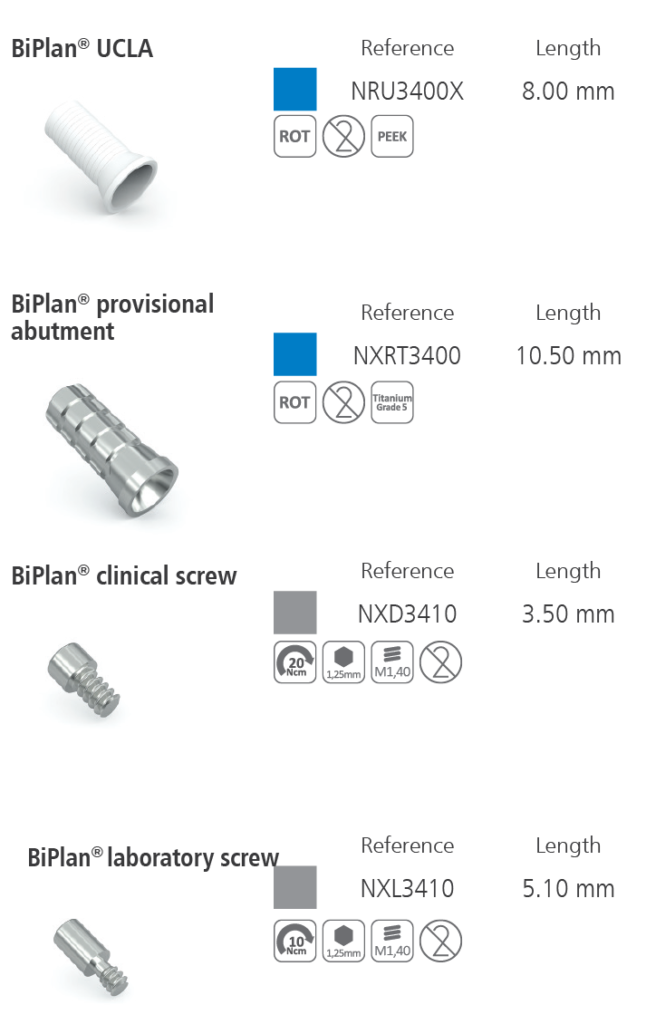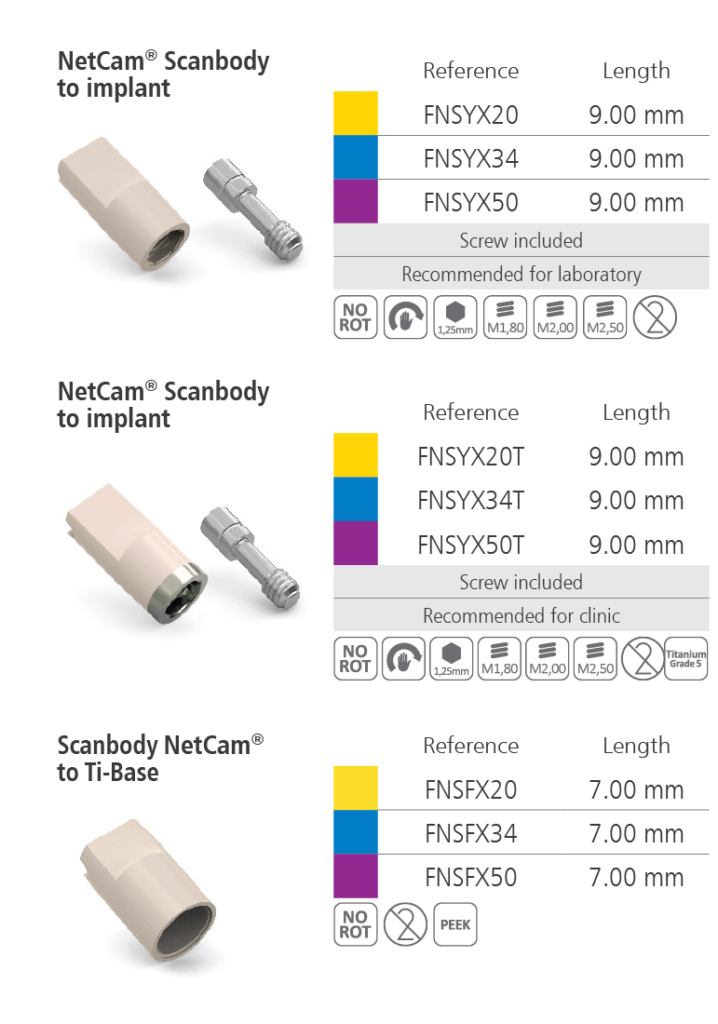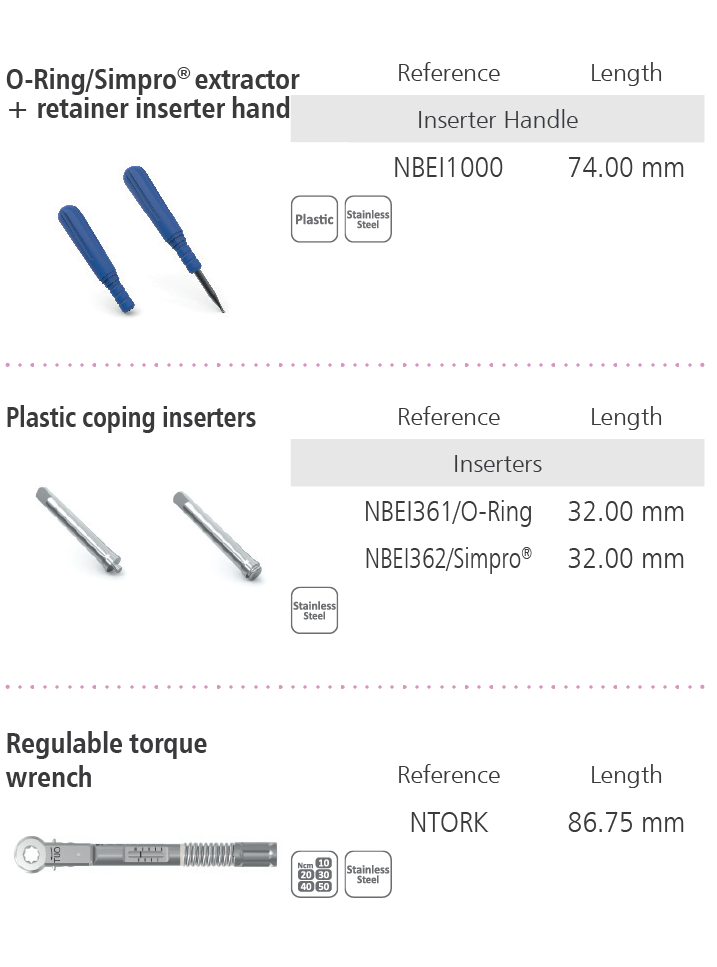Body
- Double lead thread of reduced angle: benefits implant stability during the insertion and increase the BIC.
- Double-thread: reduction of surgical time during the insertion.
- Active apex and apical vent: self-tapping, which facilitates the osteotomy in the insertion.
- Morphology designed to achieve high primary stability.
Connection
- Upper screw canal: facilitates screw insertion.
- External hexagonal connection.
Cortical area
- Mechanised ring (0.4 mm): prevents exposure of treated surface in irregular crest.
- Micro-thread design: maintains crestal bone.
- Micro-threads extension: better load distribution.
- Macro-design: optimal cortical compression.
DentPross® Surface
DentPross® surface
The Dentpross® surface is achieved by the sandblasting procedure followed by a double acid etching on the implant surface and finally an argon plasma decontamination process.
This procedure achieves a microtopography on the implant surface similar to the bone structure, giving the implant surface a homogeneous macro-micro porosity.
This homogeneity of the surface, with optimum average values, favours the wettability of the surface and, therefore, the retention of the clot, enhancing the adhesion of the osteoblastic cells that initiate ostogenesis.
Dentpross® features
- Pure surface of TIO2.
- Porous Macro-Micro surface.
- Homogeneous porosity.
- Optimum average values.
- Osteoconductive surface.
- Great biological stability.
- Superficial structure similar to bone.
- High surface wettability.
- Contaminant free surface topography.




Dentpross® Mount
Dentpross® Mount with Snap-On
This Mount is designed as a multifunctional grade 5 titanium abutment with a sculptable abutment morphology that is easy to prepare for cementing.
The plastic coping can be used as an impression for closed tray. Due to its characteristics, Mount DentPross® is an abutment with three functions: Mount, impression abutment for Snap-On for closed tray technique and sculptable abutment.
The plastic coping for Snap-On* has an internal straight surface which is guided through the upper grooves and aligned with the plane of the abutment. After sliding under pressure, it is snapped into the lower abutment groove ensuring secure retention for impression taking and subsequent abutment replacement.
Surgical box and prosthetic kit
Surgical box internal connection Ntx®/Nti®

Prosthetic box external connection Ntx®/Nti®








